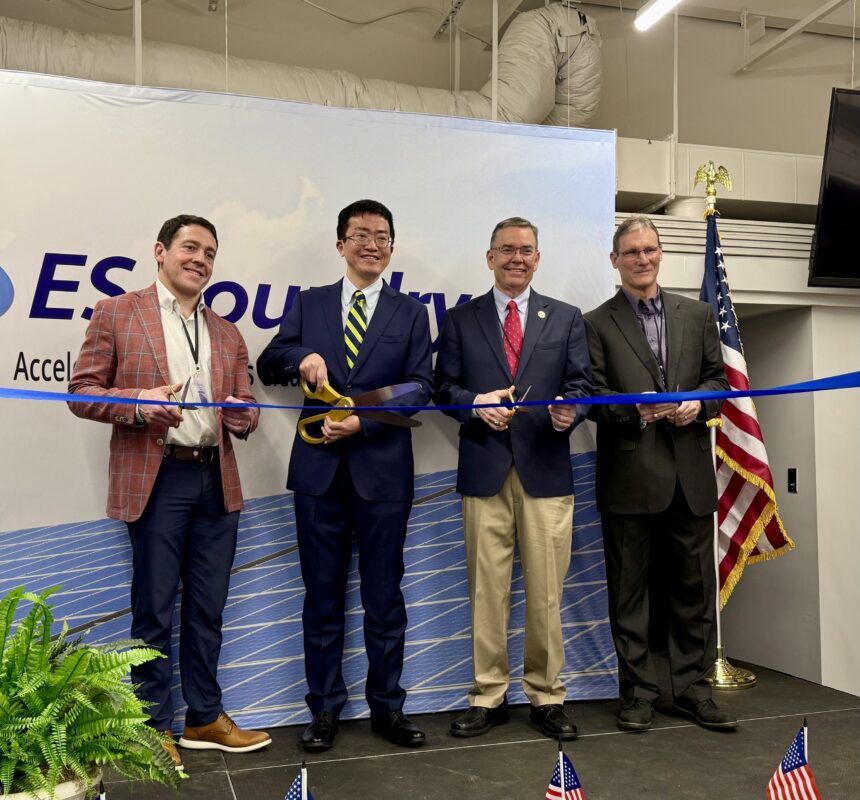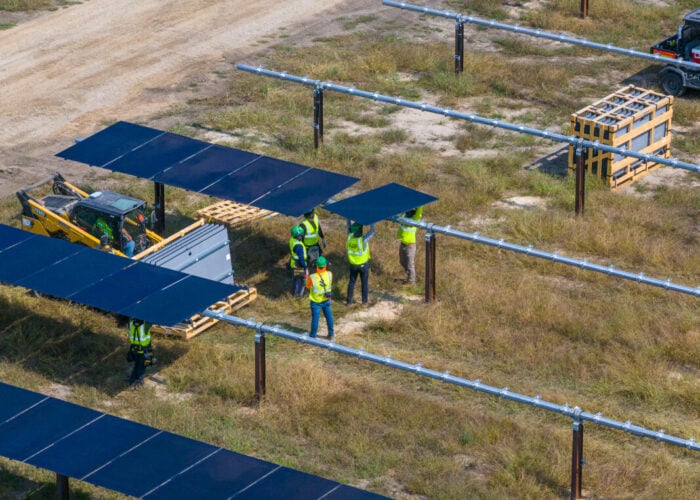
ES Foundry has begun producing solar cells at its 3GW manufacturing plant in South Carolina.
The company, which is headquartered in South Carolina, said the facility’s inauguration last week (31st January) “marks a pivotal moment for the US solar industry.”
Try Premium for just $1
- Full premium access for the first month at only $1
- Converts to an annual rate after 30 days unless cancelled
- Cancel anytime during the trial period
Premium Benefits
- Expert industry analysis and interviews
- Digital access to PV Tech Power journal
- Exclusive event discounts
Or get the full Premium subscription right away
Or continue reading this article for free
The site will produce 3GW of passivated emitter rear contact (PERC) crystalline silicon solar cells by Q3 2025, ES Foundry said in an announcement.
Speaking at the opening, Alex Zhu, CEO of ES Foundry said: “We are not just celebrating a factory—we are forging a path to a more sustainable, energy-secure future for America.
“Our advanced solar cells are engineered and manufactured right here in the United States, ensuring reliability, efficiency and the opportunity to maximize financial incentives for our partners.”
The number of companies producing US solar cells is growing. Silfab Solar secured US$100 million in November to support its plans for a tunnel oxide passivated contact (TOPCon) cell production facility, also in South Carolina, and Korean-owned Hanwha Qcells is in the process of ramping up a facility in Cartersville, Georgia.
“SEIA congratulates ES Foundry for opening this new facility, which will play a critical role in ensuring the United States is the dominant global solar manufacturing leader,” said Abigail Ross Hopper, president and CEO of the Solar Energy Industries Association (SEIA). “This facility is an example of how we combine good policy with business innovation to deliver for American workers, support the local economy and strengthen our nation’s energy security.”
Solar cells and other upstream components like wafers and ingots have been slow to take root in the US manufacturing space. Data from the SEIA (below) shows that, as of the end of 2024, planned and operational solar module manufacturing capacity far outstripped cell capacity plans.
It is notable that ES Foundry has chosen to produce PERC cells at a time when the mainstream of large-scale solar PV production is switching to TOPCon products.
The company said: “Unlike emerging technologies that face challenges with scalability and durability, PERC cells provide a proven, cost-effective solution for developers/asset owners, tax equity providers and panel manufacturers.”
Indeed, recent reports have emerged which highlight degradation issues with TOPCon cells in excess of those found with PERC technology.
However, the majority of large-scale manufacturers have shifted much of their production capacity to TOPCon. This shift was partially enabled by the relative ease with which PERC production lines can be adapted to produce TOPCon products.






